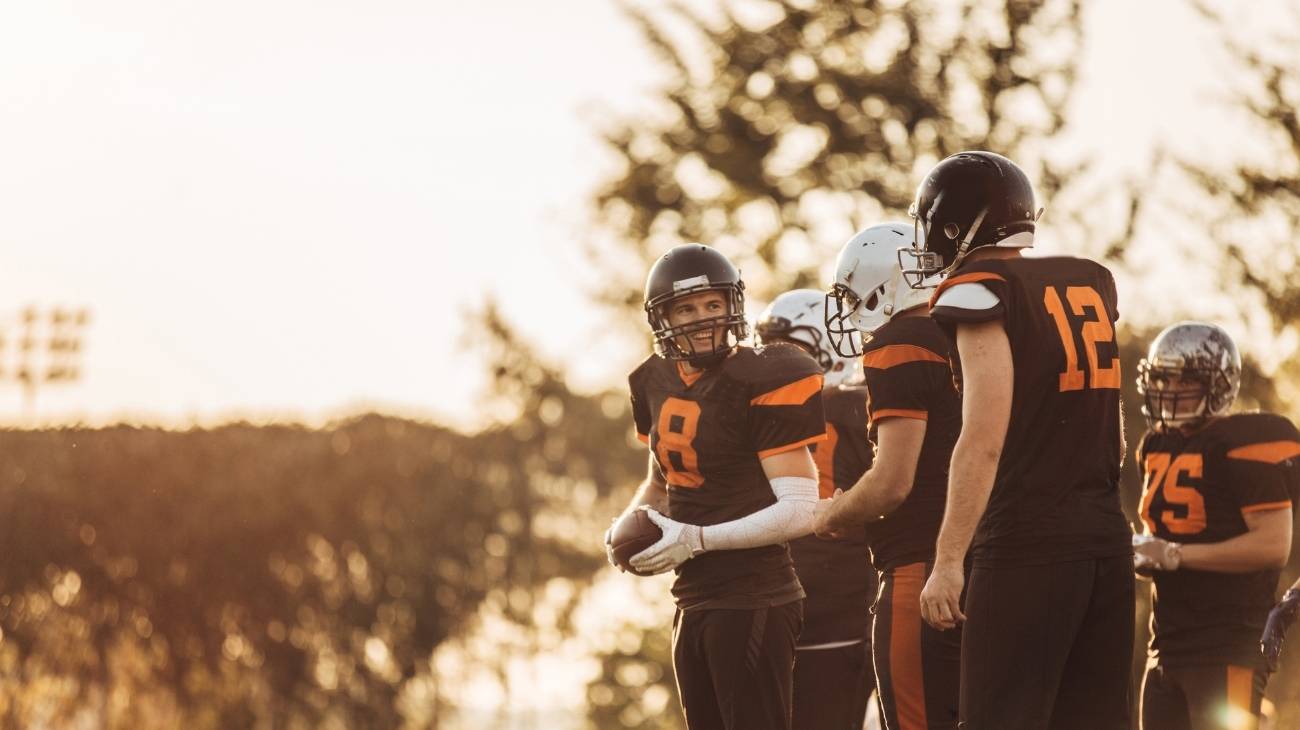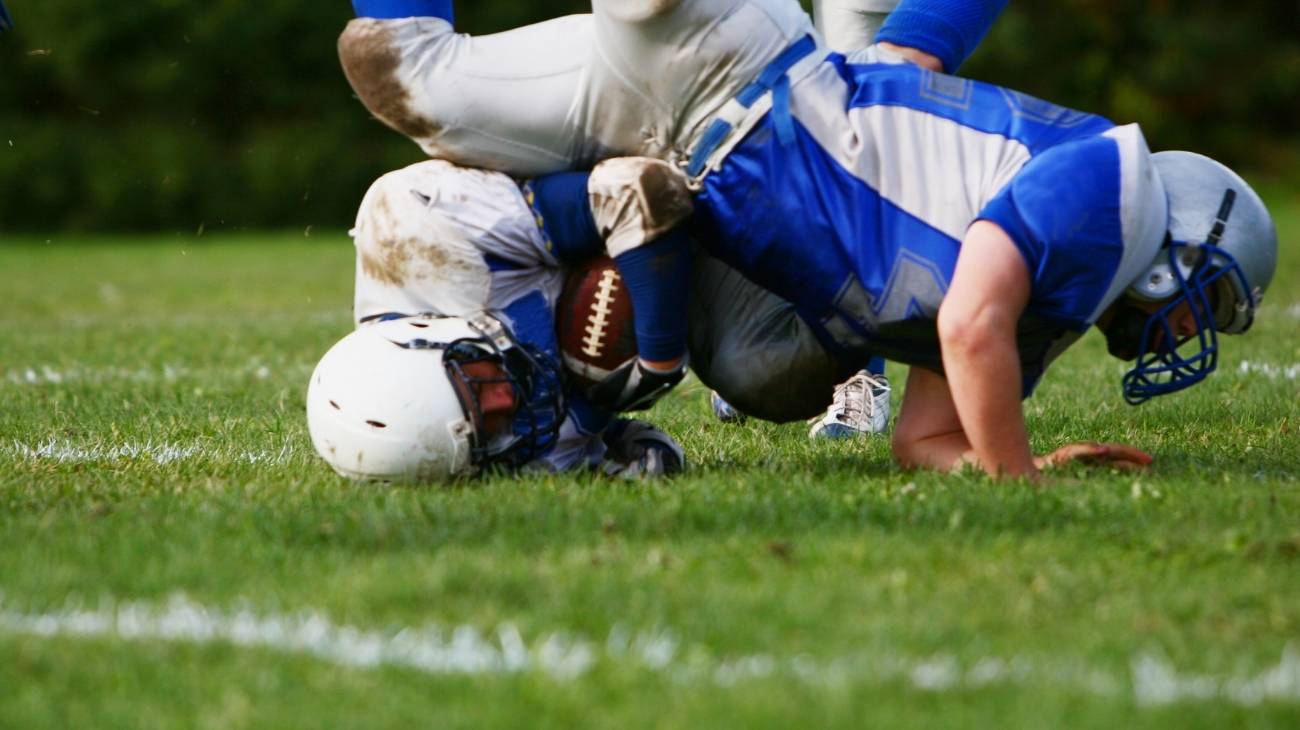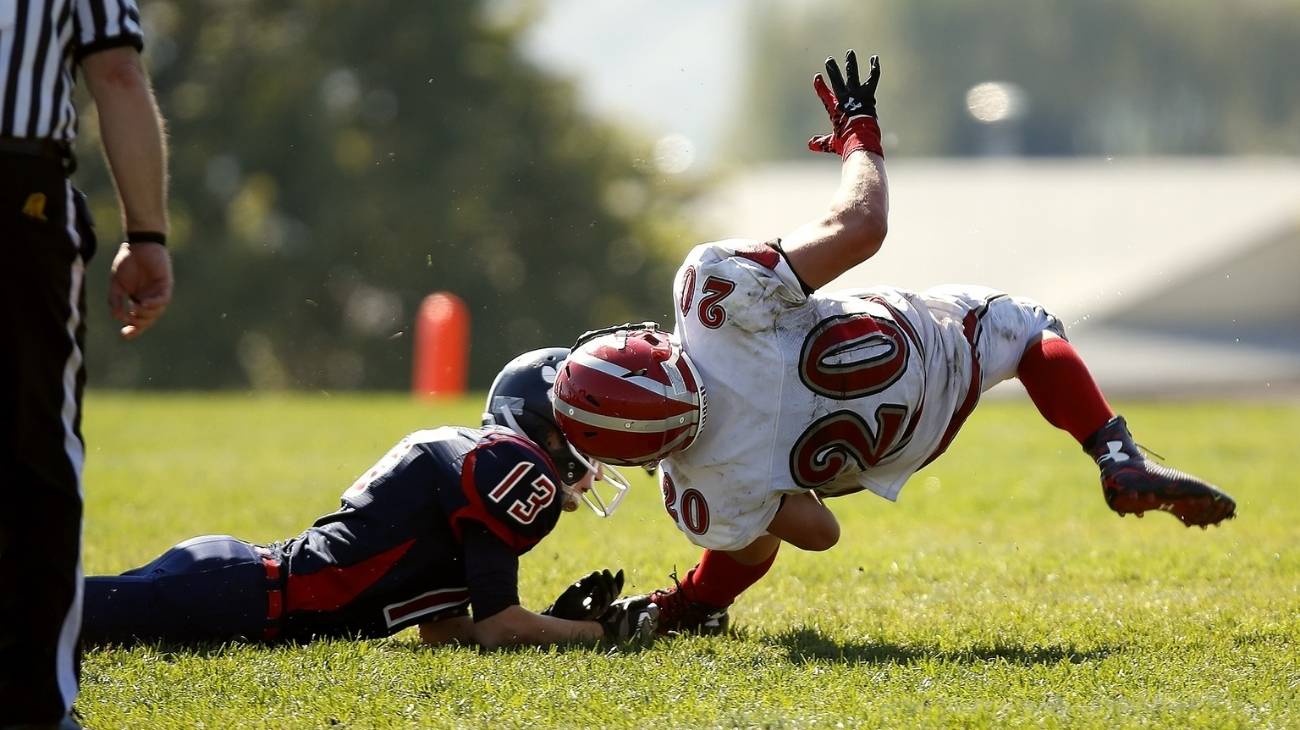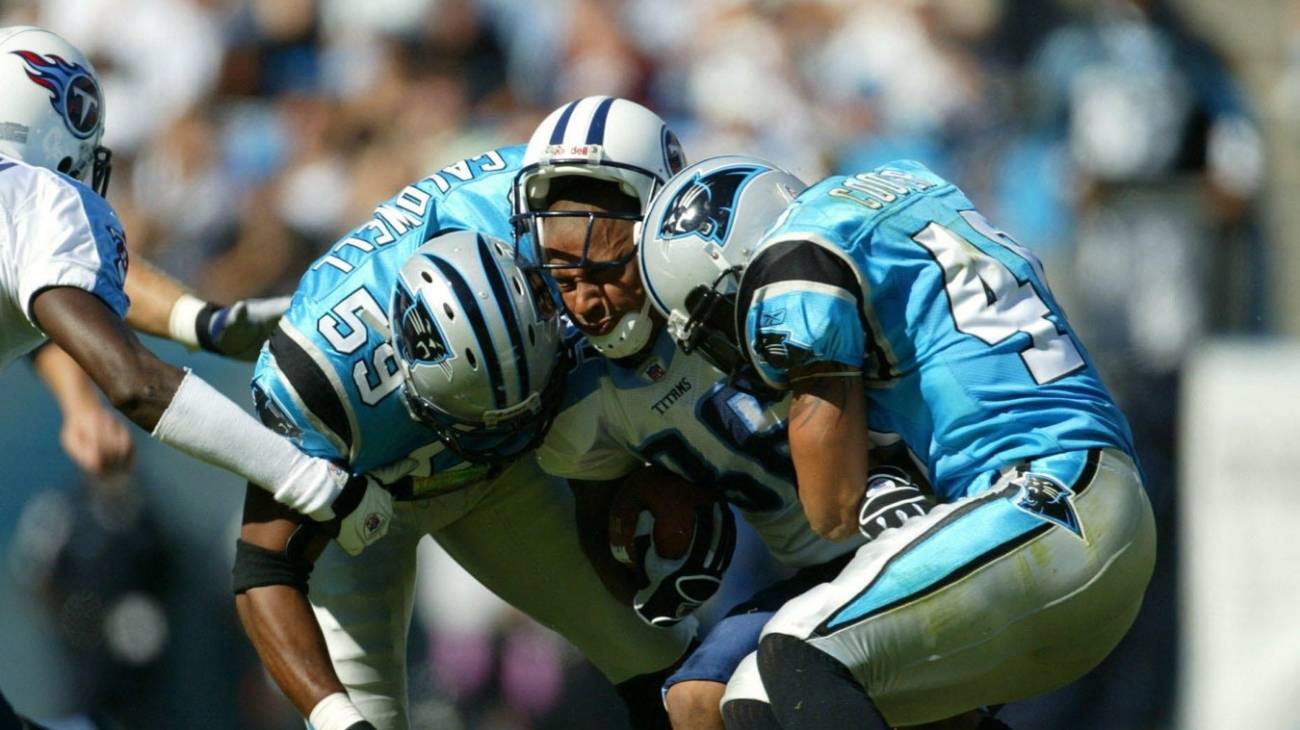Although all football players take hits during a game, the quarterback is the one who takes the most hits because of his central role in the offense. The weight of every play and the weight of muscle wear and tear falls on his shoulders, which is why he is the most high-contact position in both U.S. and Canadian football.
In this article you will learn which are the most frequent shoulder injuries when you play football, how each one of them originates and what you can do to avoid them. In addition, we will show you how to apply the PRICE therapy to relieve pain from a minor injury and which are the most commonly used products on the market to overcome a shoulder injury.
What are the most common types of shoulder injuries when playing football?
As we mentioned, any of the 22 players on the field can suffer an injury, but the quarterback is the one who receives the most trauma. That is why it is important for you to know the risks and types of injuries you can suffer if your passion is football.
Dislocations
There are several reasons for the shoulder to come out of its usual place: a strong and direct blow, wear and tear of the arm due to constant throwing and a sudden fall of the player. Whatever the case, the most frequent dislocation is the previous one, when the head of the humerus is the one that comes off.
Sometimes the dislocation, as this ailment is also known, is mild or partial, meaning that there is hardly any displacement of the bone. But because of the intensity of football, most dislocations are total, when the arm bone is completely detached from the joint.
In every tackle there is a high risk of dislocation, because a tackle can generate more than 400 kilograms of force, more than twice the weight of a football player. You must be attentive to this injury because when a dislocation occurs, the probability of recurrence exceeds 90%.
What symptoms should you look for? Pain in the arm, difficulty in moving it, deformity of the joint and even tingling in the fingers. The only clinical solution is to relocate the humerus to its usual position, then spend two weeks with the arm immobilized and finally begin a period of physiotherapy.
Tendonitis
In football there are two tendons that suffer the greatest workload and become injured: One is the rotator cuff tendon and the second is the biceps tendon. What is the tendons' job? To keep the muscles attached to the arm bone, so both trauma and muscle wasting cause this injury.
Throwing the ball is an explosive movement that requires strength and precision, the success of the pass will depend on the muscle memory of the arm and to develop this technique requires many repetitions. In each movement there is wear and tear that accumulates until it irritates one of the two tendons we have already mentioned.
When a tendon is irritated it also becomes inflamed and sometimes ruptures in some of its fibers, this is known as tendinitis. But when the tendon ruptures in more areas or breaks completely, it is known as tendinosis and the only relief is surgical intervention.
A good specialist will try to avoid surgery, so he will try to relieve the injury with arm rest and drugs, or he may opt for direct injection of platelet-rich plasma to help regenerate the damaged cells. The lesser the damage, the faster the return to the field.
SLAP injury
This is a very particular injury in offensive line players, they receive constant onslaught from opponents and that frequent impact causes the insertion of a tendon in the biceps brachii. Another of the most frequent causes is the fall of the player with the arm extended.
In addition to the blows and falls, the constant movement of throwing the ball becomes a trigger for inflammation of the tendon. It is called SLAP (Superior Labrum Anterior to Posterior) injury, and it can affect the labrum, which is a fibrocartilage that offers greater stability to the joint.
The tendon that suffers the insertion is that of the biceps, which generates that sometimes the pain is radiated in the superior part of the shoulder and generates a sensation of tingling in the fingers in some cases. If the injury is repeated over and over again, the fibrocartilage begins to wear out completely without the possibility of recovery on its own.
There are four types of SLAP injury, the most severe being when there is a rupture of the labrum and the affected tendon. In these cases, fibrocartilage replacement and tendon repair surgery is performed.
Acromioclavicular injury
This is the most sensitive part of the shoulder. This is why sprains and fractures are likely to occur in a single injury following the same incident in the field. The most likely cause is the player falling sideways, with the arm extended in either direction, which will cause the blow to be felt more on the upper part of the shoulder.
A sprain of this type tears all of the ligaments, so it is quite a painful injury that will cause the player to be taken to the emergency room immediately. In addition, it is quite likely that the ligaments of the coracoclavicular joint will also be damaged.
When this injury occurs, the function of the shoulder is completely altered, the clavicle and acromion overlap, there are multiple tears and displacements of the distal clavicle. This is not to mention the possible fractures that may occur.
The first thing you should do is an x-ray on both sides of the shoulder to rule out bone fissures. Then we proceed to the joint immobilization for a minimum of three weeks and then give way to a process of physiotherapy. In the most serious injuries, when all the ligaments are broken, an open operation must be performed.
Fractures
According to the NFL, most fractures occur in the clavicle and are caused by falls. In a single game, athletes jump, lunge, slide and collide with each other. In all of these scenarios, the body is likely to fly through the air until it falls on its side and breaks the collarbone.
You can touch the clavicle with your fingers; it is a fragile bone and is located on top of the sternum and shoulder blade. As its position is horizontal, lateral blows affect it directly to the point of breaking it. Sometimes the damage is minor, there are only cracks, but it should still be attended by a specialist.
Often, the player feels pain and does not associate it with the fracture of the clavicle, so after a strong blow to the shoulder there should always be a manual exploration. And if there is pain, an X-ray should be performed.
Only if the fracture is in the form of a fissure, it will not be necessary to place pins or perform surgery. Although it may take several weeks for there to be a reliable weld, you can return to sporting activity if there is no pain in the shoulder and the strength and mobility of the joint are normal.
Best products for the recovery of shoulder injuries in football
Bestseller
-
Acupressure Mat and Pillow (Black/Gray)
$49.95 -
Acupressure Mat and Pillow (Green/Navy)
$49.95 -
Acupressure Mat and Pillow (Pink/Bordeaux)
$49.95 -
Acupressure Pillow (Black/Gray)
$29.46 -
Acupressure Pillow (Green/Navy)
$29.46 -
Acupressure Pillow (Pink/Bordeaux)
$29.46 -
Ice Massage Roller Ball (Black)
$39.95 -
Ice Massage Roller Ball (Green)
$39.95 -
Ice Massage Roller Ball (Pink)
$39.95 -
Microwave Heating Pad for Neck & Shoulder Pain Relief (Hearts)
$24.95 -
Microwave Heating Pad for Neck & Shoulder Pain Relief (Oxford)
$24.95 -
Microwave Heating Pad for Neck & Shoulder Pain Relief (Sport)
$24.95 -
Microwave Heating Pad for Neck Pain Relief (Hearts)
$19.95 -
Microwave Heating Pad for Neck Pain Relief (Oxford)
$19.95 -
Microwave Heating Pad for Neck Pain Relief (Sport)
$19.95 -
Microwaveable Heating Pad for Pain Relief (Hearts)
$19.95 -
Microwaveable Heating Pad for Pain Relief (Oxford)
$19.95 -
Microwaveable Heating Pad for Pain Relief (Sport)
$19.95 -
Shoulder Support Brace (Black)
$24.95 -
Shoulder Support Brace (Green)
$24.95 -
Shoulder Support Brace (Pink)
$24.95 -
Trigger Point Massage Stick (Black)
$14.95 -
Trigger Point Massage Stick (Green)
$14.95 -
Trigger Point Massage Stick (Pink)
$14.95
How to apply the RICE therapy to treat shoulder injuries in football players?
This is a therapy that must be applied by a specialist, because the shoulder is the most complex and largest joint of the human body. Remember that this method is only effective in case of minor injuries.
- Protection: When you feel pain and it is due to a fall, cover the joint with a classic bandage. Although nowadays there are supports and thermal bandages that can also help. The idea is to reduce mobility in the joint.
- Rest: The idea is to lower the probability of complications due to any inadequate movement that we can do after the injury. Rest should last a maximum of 72 hours for the injury to be considered mild.
- Ice: With the cold the intensity of pain is lowered, reduces blood circulation which favors the inflammation of the affected area and because it prevents the expansion of bruises and edema that are generated in trauma.
- Compression: Compressing the joint with the use of shoulder braces will reduce potentially dangerous movements, maintain a constant temperature and provide more rest for the shoulder to continue effective recovery.
- Elevation: You should remain seated and lying down with some tilt toward the feet so that gravity helps control the amount of blood circulating in the shoulder. Avoid having body positions that cause greater effort.
References
- Kelly, B. T., Barnes, R. P., Powell, J. W., & Warren, R. F. (2004). Shoulder injuries to quarterbacks in the national football league. The American journal of sports medicine, 32(2), 328-331. https://journals.sagepub.com/doi/abs/10.1177/0363546503261737
- Gibbs, D. B., Lynch, T. S., Nuber, E. D., & Nuber, G. W. (2015). Common shoulder injuries in American football athletes. Current sports medicine reports, 14(5), 413-419. https://journals.lww.com/acsm-csmr/fulltext/2015/09000/common_shoulder_injuries_in_american_football.19.aspx
- Beaulieu-Jones, B. R., Rossy, W. H., Sanchez, G., Whalen, J. M., Lavery, K. P., McHale, K. J., ... & Provencher, M. T. (2017). Epidemiology of injuries identified at the NFL Scouting Combine and their impact on performance in the National Football League: evaluation of 2203 athletes from 2009 to 2015. Orthopaedic journal of sports medicine, 5(7), 2325967117708744. https://journals.sagepub.com/doi/pdf/10.1177/2325967117708744
- Wang, D., Weiss, L. J., Abrams, M., Barnes, R. P., Warren, R. F., Rodeo, S. A., & Taylor, S. A. (2018). Athletes with musculoskeletal injuries identified at the NFL scouting combine and prediction of outcomes in the NFL: a systematic review. Orthopaedic journal of sports medicine, 6(12), 2325967118813083. https://journals.sagepub.com/doi/pdf/10.1177/2325967118813083
- Okoroha, K. R., Taylor, K. A., Marshall, N. E., Keller, R. A., Fidai, M., Mahan, M. C., ... & Moutzouros, V. (2018). Return to play after shoulder instability in National Football League athletes. Journal of shoulder and elbow surgery, 27(1), 17-22. https://www.sciencedirect.com/science/article/abs/pii/S1058274617304482
- Yang, J., Cheng, G., Zhang, Y., Covassin, T., Heiden, E. O., & Peek-Asa, C. (2014). Influence of symptoms of depression and anxiety on injury hazard among collegiate American football players. Research in sports medicine, 22(2), 147-160. https://www.tandfonline.com/doi/abs/10.1080/15438627.2014.881818
- Luke, A. C., Bergeron, M. F., & Roberts, W. O. (2007). Heat injury prevention practices in high school football. Clinical journal of sport medicine, 17(6), 488-493. https://journals.lww.com/cjsportsmed/Abstract/2007/11000/Heat_Injury_Prevention_Practices_in_High_School.9.aspx
- Gacek, M. (2015). Association between self-efficacy and dietary behaviours of American football players in the Polish Clubs in the light of dietary recommendations for athletes. Roczniki Państwowego Zakładu Higieny, 66(4). https://agro.icm.edu.pl/agro/element/bwmeta1.element.agro-4c51ea03-3e22-45c6-bf0d-3c214d929a81
- Abbey, E. L., Wright, C. J., & Kirkpatrick, C. M. (2017). Nutrition practices and knowledge among NCAA Division III football players. Journal of the International Society of Sports Nutrition, 14(1), 13. https://www.tandfonline.com/doi/full/10.1186/s12970-017-0170-2
- Smart, B. J., Haring, R. S., Asemota, A. O., Scott, J. W., Canner, J. K., Nejim, B. J., … & Schneider, E. B. (2016). Tackling causes and costs of ED presentation for American football injuries: a population-level study. The American journal of emergency medicine, 34(7), 1198-1204. https://www.sciencedirect.com/science/article/abs/pii/S0735675716001649












































